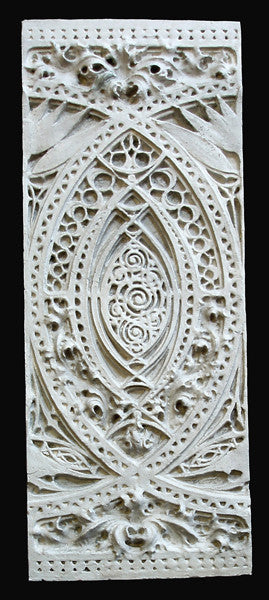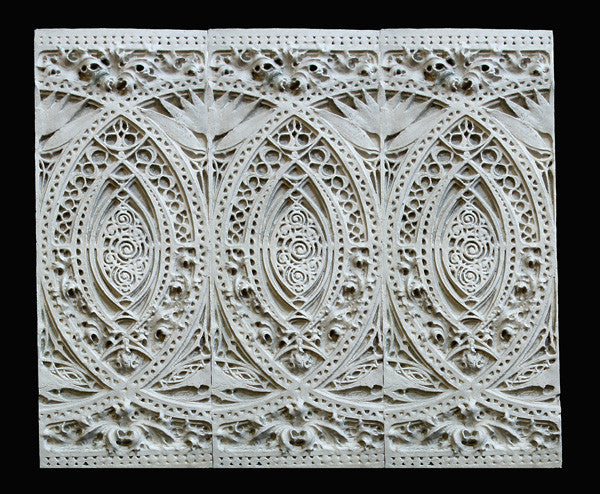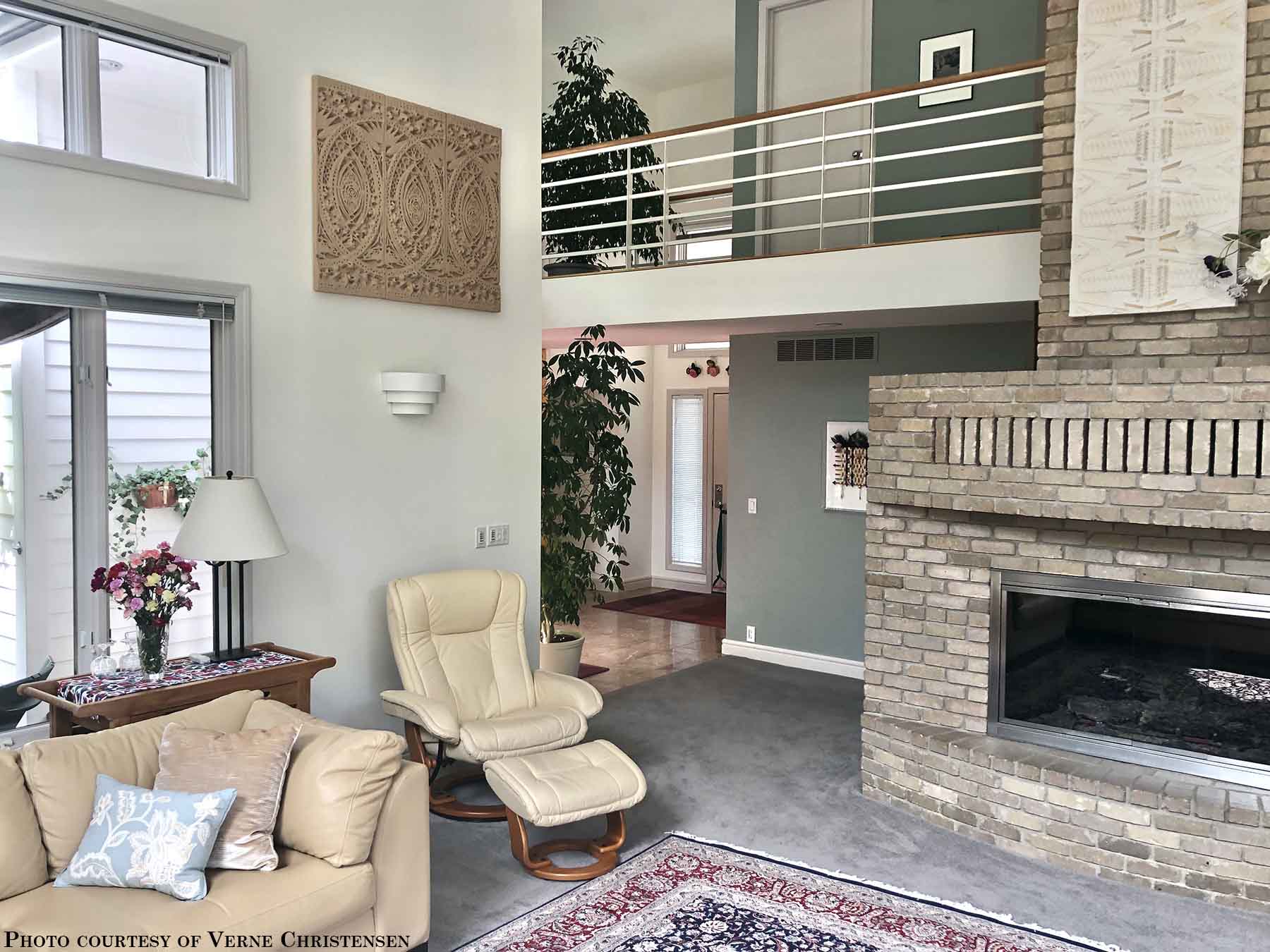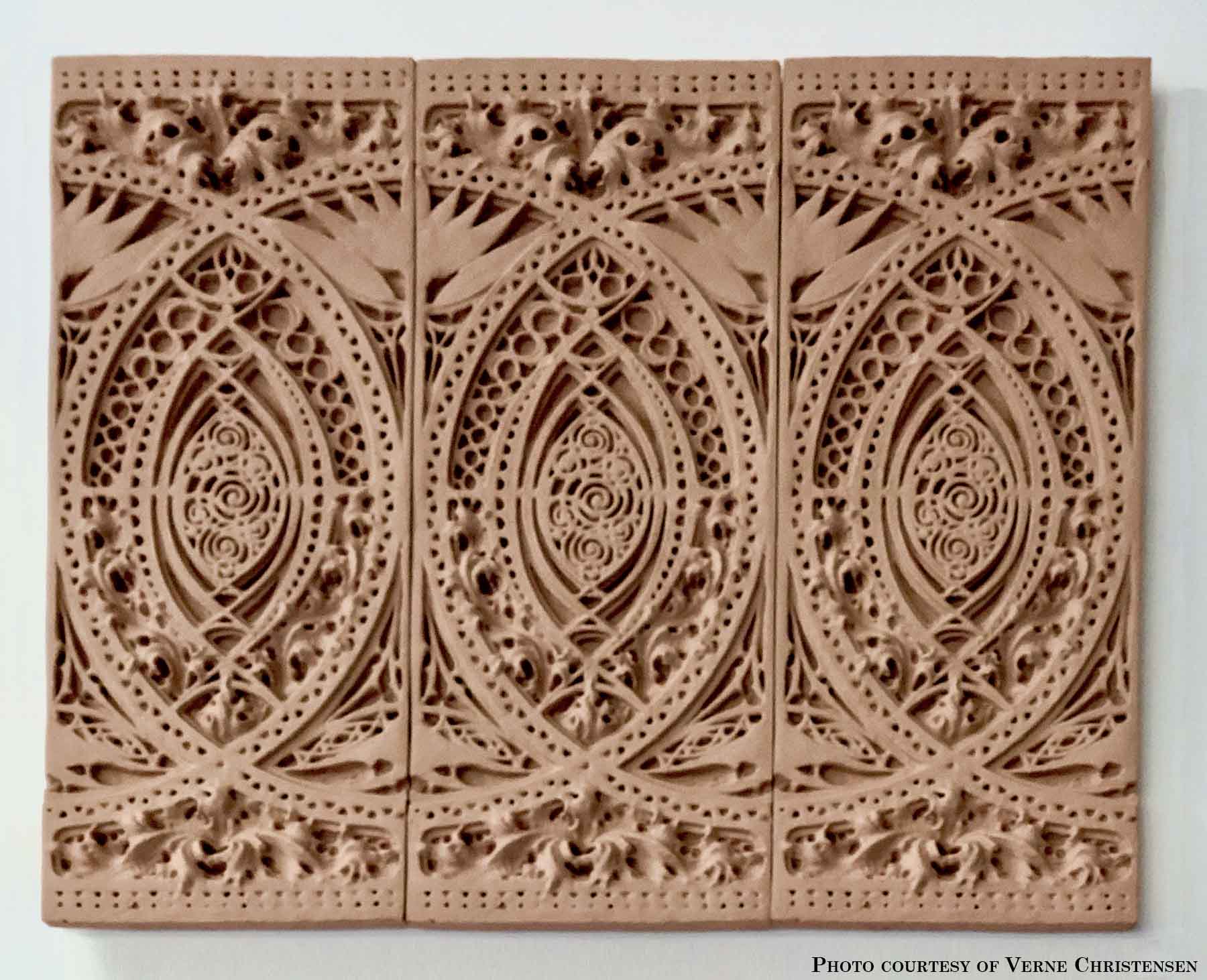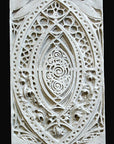
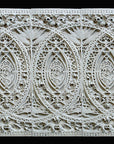
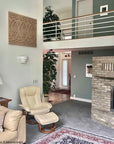
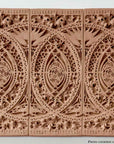
Sullivan Wall Relief - Item #826
38 Inches High x 15 Inches Wide x 1 Inch Deep
Price is for one panel. This wall panel is a repeatable pattern that can be placed side by side or alone as a single decorative relief.
Architects Louis Henry Sullivan and Dankmar Adler's Schiller Theater - later the Garrick Theater - opened in 1892. Located at 64 West Randolph Street in Chicago, the building was one of the tallest in the city at the time of its completion. It was created for the German Opera Company and included a theater with over 1,200 seats. Despite efforts to save the building in one of the first large-scale preservation efforts in Chicago and the country, spearheaded by photographer Richard Nickel, the building was demolished in 1961. A team that included Nickel received sponsorship to salvage what it could from the rubble and distribute the pieces to museums and educational institutions. This sculpted piece is one of the repeating tiles that formed a frieze in the banquet hall. It is highly ornate and thoughtfully-designed – the hallmark of Sullivan’s ornamentation. The overlapping circles – visible when the tiles are combined – are augmented with other geometric shapes as well as various curving leaf motifs. Nature strongly influenced his ornamental designs.
Sullivan (September 3, 1856 - April 14, 1924) was an architect in the Chicago School of Architecture also known as the Commercial Style. He was highly influential to the modernists who came after him, including his mentee Frank Lloyd Wright. Sullivan coined the famous architectural phrase “form follows function” to describe his philosophy that the exterior of a building should reflect the functions for which the building is used. Sullivan is also remembered for the ornamentation he created for the exteriors and interiors of his projects. Here, too, he modernized and Americanized. He changed the way ornamentation had traditionally been utilized in architecture in order to emphasize the hallmark of many new buildings of the time – their height.
Sullivan practiced with a partner as well, Dankmar Adler, at their firm Adler and Sullivan in Chicago in the late 1800s. The pair designed over 250 buildings together, and all but 30 of them have been demolished. Sullivan and Adler pioneered the practice of constructing skyscrapers and other tall buildings with a base, a shaft of identical floors, and a cornice.
Artist: Louis Henry Sullivan
Museum: Unknown
Origin: Garrick Theater, Chicago
Time Period: Modern
Sources:
Craven, Jackie. "The Meaning of 'Form Follows Function'." ThoughtCo, 28 Aug. 2020, https://www.thoughtco.com/form-follows-function-177237.
Freundt, Rachel. "Reconstructing the Garrick: Adler & Sullivan's Lost Masterpiece." Architecture and History of Chicagoland, 16 Nov. 2021, https://chicagolandarchitecture.substack.com/p/reconstructing-the-garrick-adler.
Nordstrom, Eric J. "Massive digital repository of images and ephemera on Adler and Sullivan's Schiller Building (Garrick Theater)." Urban Remains, 16 Jan. 2020, https://www.urbanremainschicago.com/news-and-events/2020/01/16/massive-digital-repository-of-images-and-ephemera-on-adler-and-sullivans-schiller-building-garrick-theater/.
Nordstrom, Eric J. "Newly discovered images offer a closer look at Richard Nickel salvaging Garrick Theater." Urban Remains, 1 Feb. 2018, https://www.urbanremainschicago.com/news-and-events/2018/02/01/newly-discovered-images-offer-a-closer-look-at-garrick-theater-salvage-efforts/.
"Richard Nickel and the Garrick Theater Building." Looking after Louis Sullivan: Photographs, Drawings, and Fragments. 19 June-12 Dec. 2010, The Art Institute of Chicago, Chicago. The Art Institute of Chicago, https://archive.artic.edu/louissullivan/garricktheater/.
Stott, Rory. "Spotlight: Louis Sullivan." ArchDaily, 3 Sept. 2018, https://www.archdaily.com/544355/spotlight-louis-sullivan.
Welton, J. Michael. "The Architecture of Adler & Sullivan." Dwell, 19 Jan. 2011, https://www.dwell.com/article/the-architecture-of-adler-and-sullivan-e67f12f5.
Pieces are plaster unless otherwise noted. They are made to order and hand cast. We offer our pieces in a variety of patinas/finishes.
Masks and small and large reliefs (except tabletop pieces as noted) come with at least one embedded hook for hanging unless otherwise noted. For all other pieces, like anatomical casts, refer to the product pages.
Questions? View the FAQ page for more information and for answers to frequently asked questions. Email us at contact@capronicollection.com or call us at 781-933-2455.
View the patina/finish options for your hand-made reproduction here or above. Be sure to make your selection when adding the item to your cart.
Most items ship within a few days to 3 weeks as our reproductions are made to order and hand cast.
Customers in the contiguous United States receive free ground shipping automatically at checkout. Note that an oversized item – typically an item weighing more than 150 pounds when packaged – will not populate a shipping rate because it may have to ship via a freight carrier. In this case, please contact us for a quote. Customers in Alaska, Hawaii, and the U.S. territories and international customers can find shipping options in the checkout process.
Items must be opened and inspected within 48 hours of delivery to report any damage.
Returns are not accepted; all sales are final as pieces are made to order and hand cast.
More info and answers to frequently asked questions can be found under FAQ.
